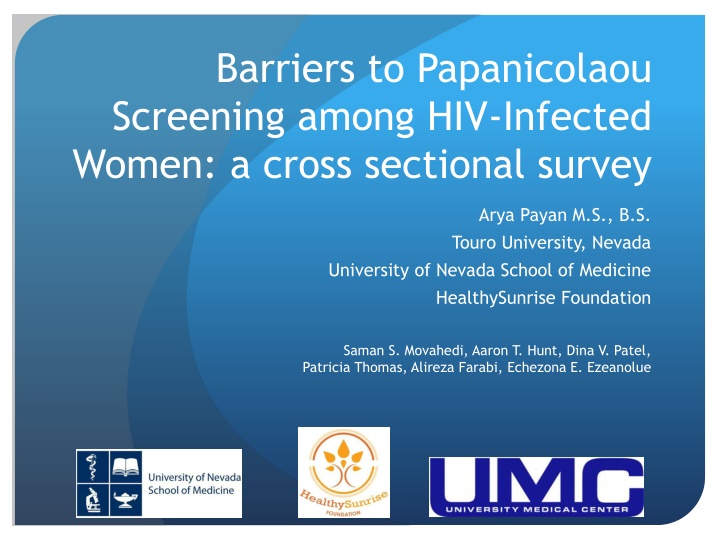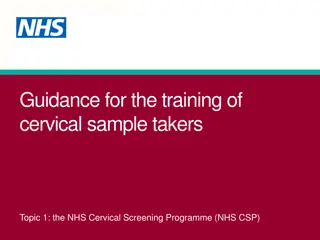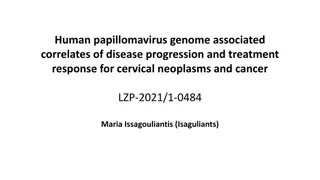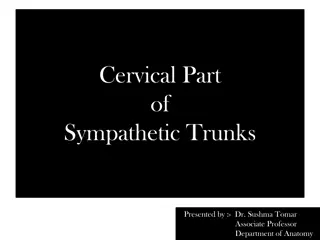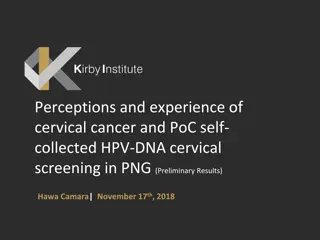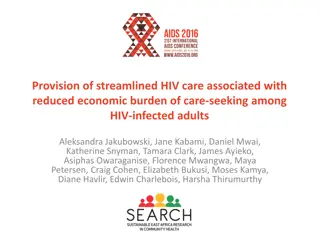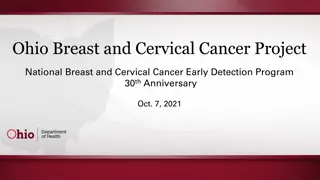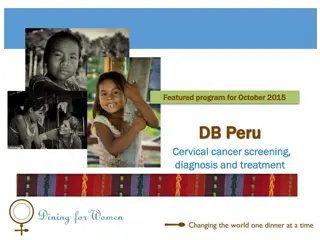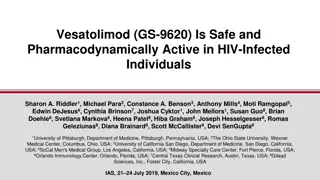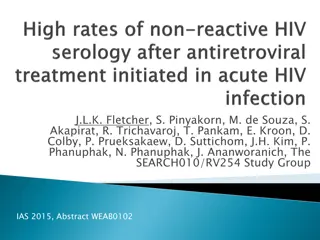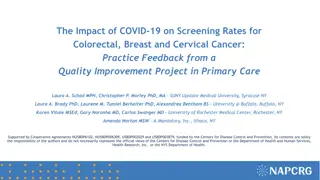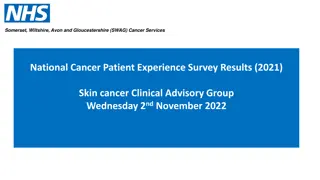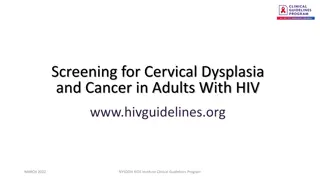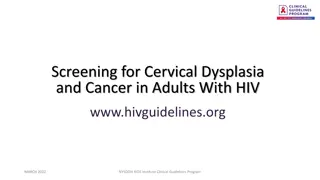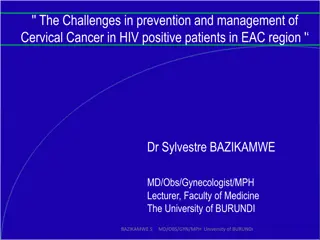Barriers to Cervical Cancer Screening among HIV-Infected Women: A Survey
Investigating barriers to Pap smear screening among HIV-infected women is vital for improving healthcare outcomes. This study surveyed 318 HIV-positive women to understand factors hindering cervical cancer screening, such as perceived barriers and preferences for appointment reminders. The research sheds light on challenges faced by this population, aiming to enhance screening rates and overall health.
Download Presentation

Please find below an Image/Link to download the presentation.
The content on the website is provided AS IS for your information and personal use only. It may not be sold, licensed, or shared on other websites without obtaining consent from the author.If you encounter any issues during the download, it is possible that the publisher has removed the file from their server.
You are allowed to download the files provided on this website for personal or commercial use, subject to the condition that they are used lawfully. All files are the property of their respective owners.
The content on the website is provided AS IS for your information and personal use only. It may not be sold, licensed, or shared on other websites without obtaining consent from the author.
E N D
Presentation Transcript
Barriers to Papanicolaou Screening among HIV-Infected Women: a cross sectional survey Arya Payan M.S., B.S. Touro University, Nevada University of Nevada School of Medicine HealthySunrise Foundation Saman S. Movahedi, Aaron T. Hunt, Dina V. Patel, Patricia Thomas, Alireza Farabi, Echezona E. Ezeanolue
Adults and children estimated to be living with HIV - 2013 Eastern Europe & Central Asia 1.1 million [980 000 1.3 million] North America and Western and Central Europe 2.3 million [2.0 million 3.0 million] Middle East & North Africa 230 000 [160 000 330 000] Caribbean 250 000 [230 000 280 000] Asia and the Pacific 4.8 million [4.1 million 5.5 million] Sub-Saharan Africa 24.7 million [23.5 million 26.1 million] Latin America 1.6 million [1.4 million 2.1 million]
Background on HIV/AIDS 35 million people live with HIV worldwide 46% women 1.15 million individuals in the United States 26% are women
Background on HIV/AIDS 1.5 million individuals died worldwide from AIDS in 2013 2.1 million individuals newly infected with HIV in 2013
Malignancy in HIV Increased risk of developing other disease Malignancies Cervical Cancer Papanicolaou (Pap.) smear is the currently recommended method of screening
HIV/AIDS in our Population Tri-county Area (Clark, Mojave and Nye) 8,484 people living with HIV/AIDS 1,371 (~16%) are women We work with women that receive care for their HIV/AIDS at the UMC Wellness Center
Study Objective and Design We sought to understand barriers to cervical cancer screening among HIV-infected women Our cohort was 318 HIV/AIDS positive women in our university-affiliated outpatient clinic
Methods Investigators contacted patients via telephone to complete an investigator administered 30-item questionnaire, 13 barriers questioned. 13 questions regarding potential barriers; some items asked: Date of last Pap. smear Perceived barriers to getting a Pap. smear Preferred method of contact for making a Pap. smear appointment and/or getting a reminder
Phone Call Methodology Attempt # 1 (10am to 4pm) Reached Not Reached Attempt #2 (evening or weekend) Survey Completed Survey Not Completed Reached Not Reached Attempt #3 (evening or weekend) Reached Not Reached
Results 141 patients were reached and 77 completed the survey (completion rate=55%) 46% did not receive Pap. smears in the past year
Results Perceived barriers to receiving Pap. smears were found Cost 23% Lack of insurance 14% Transportation 12% Comfort level with physician 6%
Results Among those that did NOT receive a Pap. smear within the last year, 45% reported that being contacted via text messaging would best aid them to come in more regularly
Discussion No single perceived barrier is likely affecting cervical cancer screening rates among HIV/AIDS positive women Rather a combination of factors This unique population deals with multiple medical and non-medical appointments related to their health Utilizing preferred communication methods for both scheduling and reminders is likely to increase screening rates among HIV/AIDS patients
How is texting being used internationally? Collectively known as mHealth Appointment reminding and making Emergencies and disasters Medication adherence Health education
mHealth in the Healthcare Setting Cincinnati Children s Medical Center currently uses it throughout pregnancies; very positive outcomes Rural India Sub Saharan Africa mobile phone penetration in 2012 was 58%, expected to exceed 70% by 2015* Initial data is promising, but more research needed * Deloitte, 2012
Conclusion Automated text messaging is the preferred mode of contact for HIV-infected women in Southern Nevada Clinics should be flexible and strive to find innovative ways to match the needs of their patients
Acknowledgements Funding provided by: National Institutes of Health (NIH) HRSA - Ryan White CARE act Special Thanks to: Saman S. Movahedi, M.S. Aaron T. Hunt, M.P.H Dina V. Patel, A.P.N. Dr. Echezona E. Ezeanolue, M.D.
